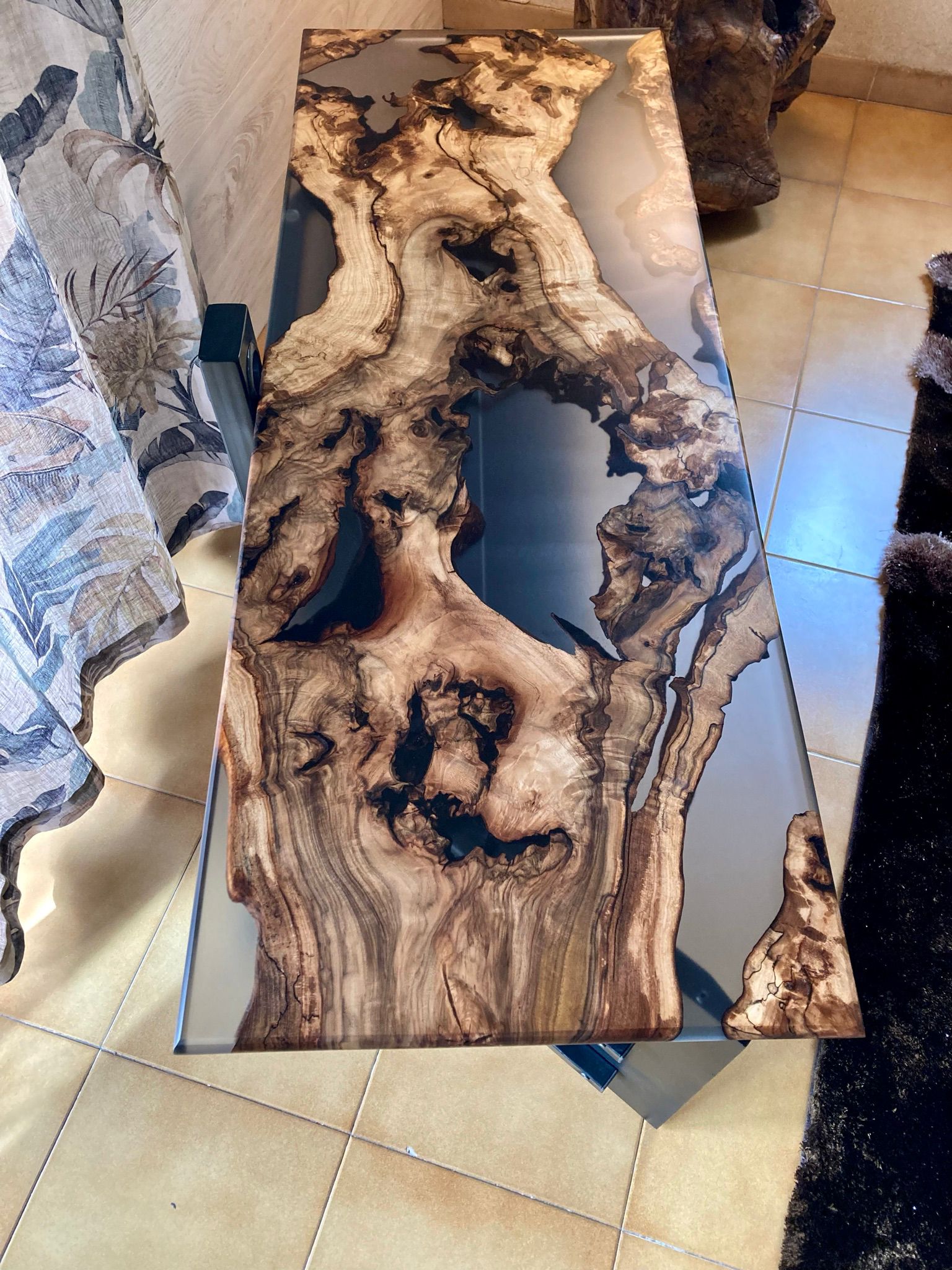How is Epoxy Resin Made?
We all love the look an epoxy table gives. But have you ever wondered how is epoxy made? Epoxy resins are made up of a variety of basic components and cured end products.
It is also known as polyepoxides which are epoxide-containing reactive prepolymers and polymers. Epoxy is the collective name for the epoxide functional group.
Manufacturers typically give a set recipe. However, the hardness and flexibility of the polymerized block can change by altering the amounts of the different components.
Adhesives, flooring, plastics, paints, primers, sealers, varnishes, and other building and construction items and materials all employ epoxy resins.
What is Epoxy resin?
Epoxy is just an epoxy resin that has been cured. Epoxy resin, in other words, is epoxy glue in a liquid state. The resin and the curing agent are the two most important components of every epoxy.
The hardening process begins when the resin and the curing agent react. Bisphenol and epichlorohydrin are used to make the resin.
A mixture of acetone and phenol is the most prevalent kind of bisphenol. It was discovered in coal tar when it was initially found. However, chemists today extract it from petroleum.
Epoxy resins can be reacted with a variety of co-reactants, including alcohols, acids, polyfunctional amines, phenols, and thiols, by catalytic homopolymerization.
The cross-linking reaction is generally referred to as curing, and the co-reactants are referred to as hardeners or curatives.
Epoxy resins are typically made up of four components which include an accelerator, a hardener, a monomeric resin, and a plasticizer. On the other hand, epoxy resins are now available from a variety of specialty retailers as well as most home improvement stores.
As numerous dealers are available online, you will almost certainly discover the widest assortment of high-quality product versions for all potential application areas online.
How Is Epoxy Made?
Epoxy resins are thermosetting polymers that have exceptional tensile and resistant qualities. They are the product of a chemical process known as ‘curing,’ which involves epoxides and other substances known as ‘hardeners’ or curing agents.
Hardeners may be made from a variety of materials, including polyamines, aminoamides, and phenolic compounds.
The curing process involves an exothermic reaction caused by either the epoxy resins reacting with themselves or cross-linking with a hardener. The curing procedure will produce epoxy thermoset polymers with exceptional adhesion, durability, resistance, and adaptability.
The strong bonding strength of epoxy resin makes it difficult to remove. Furthermore, epoxy resin’s compounds might irritate your skin and lungs. When handling epoxy for any job, it is critical to utilize appropriate protective equipment.
On the other hand, two-part epoxy resins consist of an epoxy resin and a hardener that cross-links the system through the epoxide ring’s ring opening. Because diamines are more reactive than anhydrides, a thiol-based crosslinker is commonly utilized in fast-setting resins.
Depending on the hardener’s reactivity, these polymerizations or curing processes might take hours at room temperature or need hours of heating at 80-180 degrees Celsius.
The conditions are critical for resin processing since the system’s viscosity will rapidly grow, and once gelation happens, the system is basically set.
The epoxide ring-opening is likewise exothermic, and some systems can create enough heat to self-catalyze to completion once initiated.

Types of Epoxy Resin
Epoxy compounds are famous for their tensile strength and ability to adhere to a variety of substrates. Furthermore, it has a wide range of bonding power and physical strength based on the resin mix and hardener employed, as well as the material to which it is bound.
Epoxy resins have tensile strengths ranging from 5,000 to 6,000 pounds per square inch. On the market, there are a number of epoxy resins, each with its own formulation for a variety of substrates and applications. There are two types of epoxy:
Coating Epoxy Resin
Coating epoxy resin has a 1:1 mix ratio of resin to hardener and cures faster. Epoxy resin is used to coat goods to make them chip-resistant, rust-proof, sturdy, and waterproof. These coatings are extremely durable once cured, with a high-gloss, easy-to-clean surface.
Casting Epoxy Resin
Low viscosity and a long curing time characterize casting epoxy resin, often known as pouring plastic or deep pour resin. It is usually made using a 2:1 mixture of liquid epoxy resin and hardener.
This material’s increased viscosity makes it appropriate for preservation applications in which an object is immersed in epoxy. It may also be used to strengthen and stabilize materials by filling holes and gaps.
Application of Epoxy
Now that you know how is epoxy made, let’s look into where epoxy can be applied. Epoxy resins are the material of choice for a broad range of industries and applications due to their cost-effectiveness, flexibility, and strength, including:
Artwork
Epoxy resins are widely utilized by artists for a wide range of projects. The speed with which epoxy glue cures helps artists to work on their art without any delay and produce long-lasting works of art.
Electrical Components
Epoxy resins are very electrically insulative, making them perfect for electrical enclosures and components such as generators, motors, printed wiring boards, and transformers.
Epoxy Adhesives
Epoxy resin is a highly efficient and effective adhesive for bonding glass, metal, plastic, stone, wood, and other materials for a variety of uses.
This makes them perfect for bonding aviation and automobile components, as well as recreational equipment.
Furthermore, epoxy resin is also best known for making epoxy tables. These tables are durable, look amazing, and range in different colors and shapes.
You obtain an eye-catching centerpiece for your house and also a piece of modern furniture art to complement the design and atmosphere.
Conclusion
Epoxy resin is a kind of resin with robust mechanical qualities, excellent chemical resistance, and high adhesive strength, making it ideal for a wide range of applications.
Additionally, epoxy is heat resistant, long-lasting, and versatile. Epoxy can be used in practically any case where two materials must be glued together, such as for an epoxy table, strengthening a fastener, or joining subfloors.

Allen Chen
Passionate about woodwork, I started Epoxyism to display my latest creations and make them available to people seeking out unique tables and epoxy products.
